Best XML Parsing Tools to Buy in December 2025
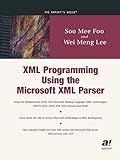
XML Programming Using the Microsoft XML Parser
- HIGH-QUALITY CONDITION: ENJOY GREAT VALUE ON GENTLY-USED BOOKS!
- ECO-FRIENDLY CHOICE: SUPPORT SUSTAINABILITY BY BUYING USED!
- AFFORDABLE PRICING: ACCESS POPULAR TITLES AT A FRACTION OF THE COST!


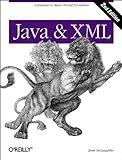
Java & XML, 2nd Edition: Solutions to Real-World Problems


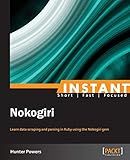
Instant Nokogiri


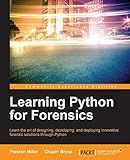
Learning Python for Forensics


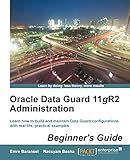
Oracle Data Guard 11gR2 Administration Beginner's Guide


PHP provides several ways to read XML data. One popular method is to use the DOM extension, which allows for easy manipulation and traversal of XML documents.
To begin reading XML in PHP, first load the XML file using the DOMDocument class:
$doc = new DOMDocument(); $doc->load('file.xml');
Once the XML file is loaded, you can access the root element using $doc->documentElement. From there, you can iterate over its child nodes to read the desired data. For example, to read all child elements of the root node:
$root = $doc->documentElement; foreach ($root->childNodes as $node) { // Process child nodes }
To read the data within each element, you can access its properties such as ->nodeName, ->nodeValue, ->getAttribute(), or use functions like $doc->getElementsByTagName() to retrieve specific elements.
If you want to read XML from a string instead of a file, use the loadXML() function instead of load():
$doc->loadXML('Value');
This allows you to read XML data directly from a variable.
Furthermore, PHP also supports other methods to parse XML, such as SimpleXML and XMLReader. These alternatives might offer different levels of simplicity and flexibility depending on your specific needs.
How to load XML data in PHP?
You can load XML data in PHP using the SimpleXMLElement class. Here's an example:
- Create an XML file (e.g., data.xml) with the following content:
- In your PHP script, use the simplexml_load_file() function to load the XML file:
$xml = simplexml_load_file('data.xml');
- You can then access the XML elements and attributes using object-oriented syntax:
// Access the first employee's ID $id = $xml->employee[0]->id; echo $id; // Output: 1
// Access the second employee's name $name = $xml->employee[1]->name; echo $name; // Output: Jane Smith
- You can iterate over the XML elements using a foreach loop:
foreach ($xml->employee as $employee) { $id = $employee->id; $name = $employee->name; $email = $employee->email; echo "ID: $id, Name: $name, Email: $email"; }
In this example, the XML data is loaded and accessed using the SimpleXMLElement class in PHP.
How to handle different XML encodings in PHP?
To handle different XML encodings in PHP, you can use the following steps:
- Read the XML file: Start by reading the XML file using the simplexml_load_file() function. This function will parse the XML and create a SimpleXMLElement object.
$xml = simplexml_load_file('file.xml');
- Detect the XML encoding: Check the XML declaration at the beginning of the file to determine the XML encoding. You can extract the encoding by accessing the encoding attribute of the tag.
$encoding = $xml->xml->attributes()->encoding;
- Set the correct encoding: PHP has built-in support for different encodings through the mbstring extension. Use the mb_internal_encoding() function to set the internal encoding to match the detected encoding.
mb_internal_encoding($encoding);
- Convert the XML to UTF-8: If the detected encoding is different from UTF-8, you need to convert the XML to UTF-8 to ensure consistent handling. You can use the iconv() function for this purpose.
if ($encoding != 'UTF-8') { $xml = iconv($encoding, 'UTF-8', $xml->saveXML()); }
- Process the XML: Now, you can process the XML as needed, using the $xml variable. For example, you can access elements, attributes, or perform any required modifications.
$value = $xml->element->subelement;
By following these steps, you can handle different XML encodings in PHP and ensure compatibility with your code.
What is Atom feed parsing in PHP?
Atom feed parsing in PHP involves the process of extracting information from an Atom feed, which is a standardized XML format used for syndicating various types of web content. Atom feeds often contain a list of entries, each representing a specific piece of content such as blog posts or news articles.
PHP provides various libraries and functions to parse Atom feeds and extract the desired information. This typically involves using either the SimpleXML or DOMDocument extension to parse the XML structure of the feed and access its elements.
With an Atom feed parsed in PHP, you can access and extract data such as the title, author, date, content, and any other relevant information for each individual entry in the feed. After parsing, you can then process this data further, display it on your website, store it in a database, or perform any other desired actions based on your application's requirements.
What is SAX parsing in PHP?
SAX (Simple API for XML) parsing in PHP refers to the process of parsing an XML document using the SAX parsing model. SAX is an event-driven parsing model that reads an XML document sequentially and triggers events whenever it encounters specific elements or structures within the document.
In PHP, SAX parsing is achieved through the use of the PHP XML Extension, which provides a set of functions for parsing and manipulating XML documents. The extension includes the xml_parser_create() function, which is used to create a new SAX parser object.
Once the parser is created, it can be registered with various handler functions that will be called when specific XML events occur, such as the start of an element, the end of an element, or the parsing of character data. These handler functions allow developers to define custom behavior for processing XML data.
SAX parsing in PHP is particularly useful for large XML documents or in situations where memory efficiency is crucial, as it operates on the XML data in a streaming fashion, rather than loading the entire document into memory. However, it requires explicit event handling and may be more complex to work with compared to other parsing methods like DOM (Document Object Model) parsing.
How to handle CDATA sections in PHP?
In PHP, you can handle CDATA sections in XML by using the DOMDocument class along with DOMXPath.
Here's an example of how you can handle CDATA sections in PHP:
- Start by creating an instance of the DOMDocument class:
$doc = new DOMDocument();
- Load the XML string or file into the DOMDocument object:
$doc->loadXML($xmlString); // Load XML from a string
// or
$doc->load($xmlFile); // Load XML from a file
- Create an instance of the DOMXPath class to query the XML document:
$xpath = new DOMXPath($doc);
- Use the DOMXPath object to query for the CDATA sections in the XML. You can use the getElementsByTagName() method to select the elements and then loop through them:
$cdataSections = $xpath->query('//*/text()[normalize-space(.) = ""]');
foreach ($cdataSections as $cdata) { // Get the parent node of the CDATA section $parent = $cdata->parentNode;
// Check if the parent node is an element node (not a text node or other)
if ($parent->nodeType === XML\_ELEMENT\_NODE) {
// Create a new CDATA section node
$cdataNode = $doc->createCDATASection($cdata->wholeText);
// Replace the original CDATA section with the new CDATA node
$parent->replaceChild($cdataNode, $cdata);
}
}
- Finally, you can output the modified XML:
$newXml = $doc->saveXML(); echo $newXml;
This example finds all the CDATA sections in the XML document and replaces them with new CDATA nodes. You can modify the code to handle CDATA sections based on your specific requirements.
How to transform XML using XSLT in PHP?
To transform XML using XSLT in PHP, you can follow these steps:
- Load the XML file and XSLT stylesheet using DOMDocument:
$xml = new DOMDocument(); $xml->load('input.xml');
$xslt = new DOMDocument(); $xslt->load('stylesheet.xsl');
- Create an XSLTProcessor object and import the XSLT stylesheet:
$processor = new XSLTProcessor(); $processor->importStylesheet($xslt);
- Transform the XML using the XSLT stylesheet:
$result = $processor->transformToXML($xml);
- Save or output the transformed XML:
file_put_contents('output.xml', $result); // Save to a file echo $result; // Output directly
Note: Make sure to replace 'input.xml' with the path to your XML input file and 'stylesheet.xsl' with the path to your XSLT stylesheet.
Additionally, you can customize the XSLT transformation by setting parameters, adding extensions, or handling errors using XSLTProcessor methods.
